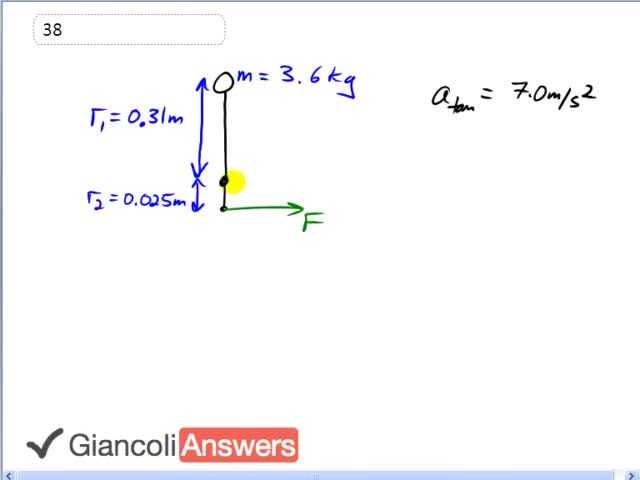
b)

In order to watch this solution you need to have a subscription.
Why do you use r1 and not the sum?
Hi gregory.wallace, since the elbow is chosen as the pivot, we need to measure each 'lever arm' by starting at the elbow. is measured starting at the elbow.
Cheers,
Mr. Dychko
Doesn't the force of the muscle also exert a torque? Wouldn't the torque be the sum of the torque exerted by the weight of the ball and the muscle?
I guess after doing part b it sort of makes sense, just not sure if I'm thinking about it the right way. Since a certain torque is needed to throw the ball at the given tangential acceleration, we can say that the minimum torque required to throw the ball is the minimum torque produced by the muscle...and that is why for part a torque of the muscle isn't included because they would cancel out anyway since they are related.
Hmmm, I would agree with everything up until the "...and that is why". In part (a) we're finding out what torque is needed to accelerate the ball. This has nothing to do with the muscle, not because of anything "cancelling out", but rather because we're turning attention strictly to the ball, and what torque is required to accelerate it. Then in part (b) we consider the thing that's creating the torque and figure out the force it must exert considering how far it is from the pivot. Not sure if that helps with your thinking, but the two parts are really distinct questions.
All the best,
Mr. Dychko
Yes that makes sense! I overthought the question. Thank you!